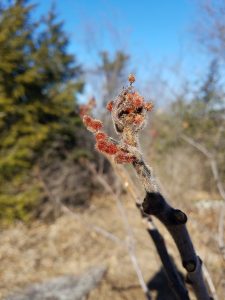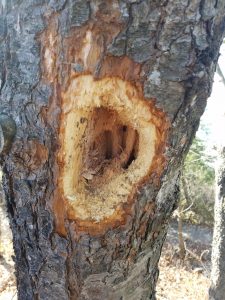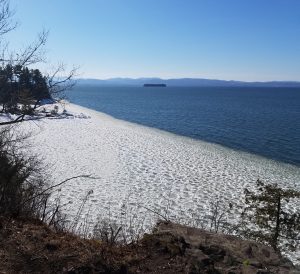This spring break I returned to my hometown and visited the same relative spot as I did first semester, in Eastern Vermont. Since this spot is in such close proximity to my home, I am going to refrain from posting a map. The spot is an organic sugar bush, which has been maintain for several decades. Quite a long time ago, it was pastures and farmland, according to the numerous stone fences.
I visited this spot after my region got a foot of snow. It was very sunny out with little wind. The woods were almost silent. I did not see signs of many birds, but it was prime animal tracking conditions.
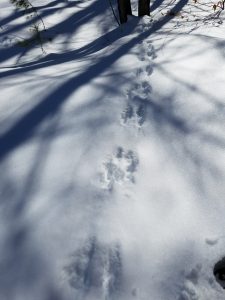
The most remarkable set of tracks that I was able to observe were a set of snowshoe hare tracks, relatively fresh in the deep snow, headed north.
The first set of tracks that I came across were either coyote or fox tracks, heading east. They appeared quite clear and undisturbed, making me think that they were also relatively fresh.
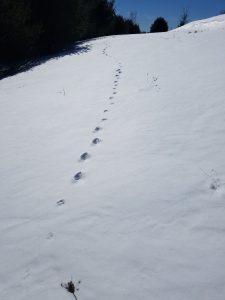
Since this was a sugar bush, I made sure to make note of if the sap was flowing through the tubing. Unfortunately, on this day it wasn’t, because it was in the 30-degree range and therefore a little too cold. The woods were mostly silent, as I stated previously, little sign of birds. This is especially strange, because the sugarbush is usually home to a lot of bird life. The silence of the woods was incredible. I was hiking with my mom, and we both were amazed at the absence of noise. It wasn’t an anxious quiet, or a dormant one. It was just that we happened to be alone in a sugarbush, which was quite the experience. It would have been nice to see some of the creatures making the tracks that we observed, but seeing the tracks alone was pretty interesting.
One thing that I noticed was how the snow truly blanketed the forest. It is rare to see mostly intact snow cover an area. The animal tracks were really the only thing to disturb the snow.

Another thing I noted was that several trees had fallen down or were cut since I visited this area last. One particularly remarkable maple that I did not take a photo of was completely toppled over, roots and all. The tree was quite large, leading me to think that it must have been rather old. This is a rare sight, especially in a sugar bush. I have no speculation as to why the tree was in this state.
